Fruit flies are a common pest that can cause significant damage to mango crops. These small insects lay their eggs inside the fruit, leading to rotting and rendering the fruit unmarketable. However, fruit flies attack mango fruits frequently, especially throughout the fruit’s growth and ripening stages, causing growers to lose 25–30% of their harvest. If the pest population and infestation are significant, it may result in a 100% yield loss. Let’s check out the key rules to get rid of fruit fly in Mango below.
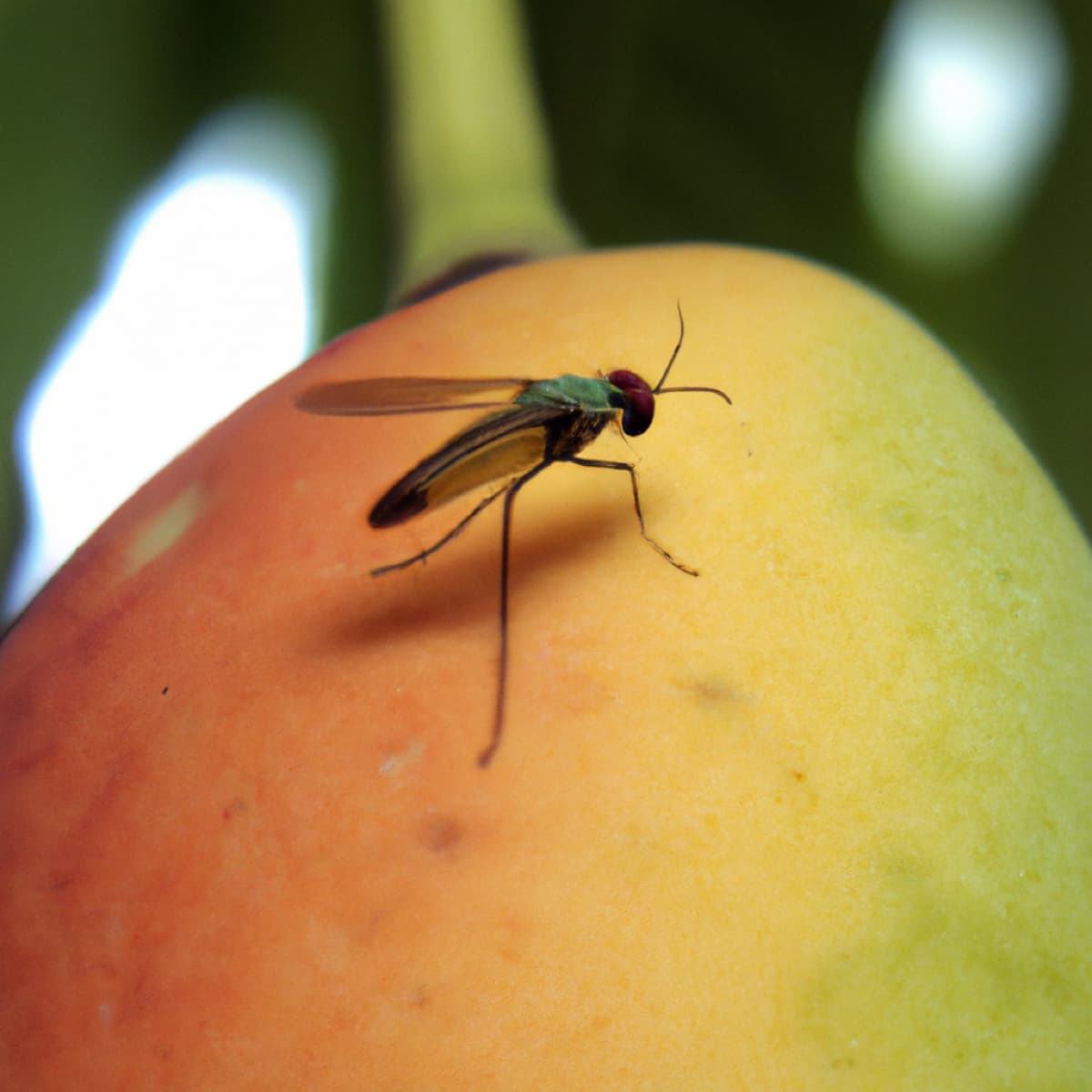
Fruits infected by fruit flies will lose quality and command a much lower market price and demand, resulting in a financial loss for growers. Fruit fly infestations in mango crops can cause significant damage to the fruit, resulting in reduced yield and quality. As a mango grower, it is essential to have a solid understanding of controlling fruit flies to protect your crops and ensure a successful harvest.
This guide will discuss the symptoms of a fruit fly infestation in mango plants, treatment options, effective management techniques, and an overview of the chemicals and organics that can be used to control fruit fly populations. With the information provided, mango growers can effectively manage and control fruit fly infestations in their orchards. By understanding the biology and behavior of fruit flies and implementing the proper methods, you can effectively control this pest and protect your mango crops.
Key rules to get rid of fruit fly in Mango
Mango tree and its pests
Mango trees are tropical trees that belong to the genus Mangifera and are native to India and Southeast Asia. They are widely cultivated for their delicious and juicy fruit, a rich source of vitamins and minerals. Mango trees are susceptible to insect pests, including the mango hopper, mango stem borer, and mango mealybug. The major pests of mango trees include:
- The mango hopper (Amritodus atkinsoni): It’s a small, green insect that feeds on the leaves and shoots of the tree, causing them to turn brown and wilt. They also excrete sticky honeydew, which can attract sooty mold.
- The mango stem borer (Batocera rufomaculata): It’s a caterpillar that tunnels into the trunk and branches of the tree, weakening them and making them more susceptible to damage from winds and storms.
- The mango mealybug (Rastrococcus invadens): It’s a small, white insect that feeds on the tree sap, causing it to become stunted and produce less fruit.
- The mango scales (Aulacaspis tubercularis): It’s a small, brown insect that feeds on the leaves, branches, and fruit of the tree, causing discoloration and premature fruit drop.
- The mango shoot webber (Eutectona machaeralis): It’s a small, reddish-brown caterpillar that feeds on the tree’s new growth, causing the shoots to become distorted and twisted.
- The mango fruit fly (Ceratitis cosyra): It’s a major pest of mango trees. It is a small, yellow-brown fly that lays its eggs inside the fruit of the tree. Once the fertilized eggs hatch, the larvae feed on the fruit, causing it to become soft and discolored, eventually leading to fruit drop. The adult fly can also feed on the fruit’s juice, causing further damage.
In case you missed it: How to Start Alphonso Mango Farming in India: A Cultivation Guide to Planting to Harvesting
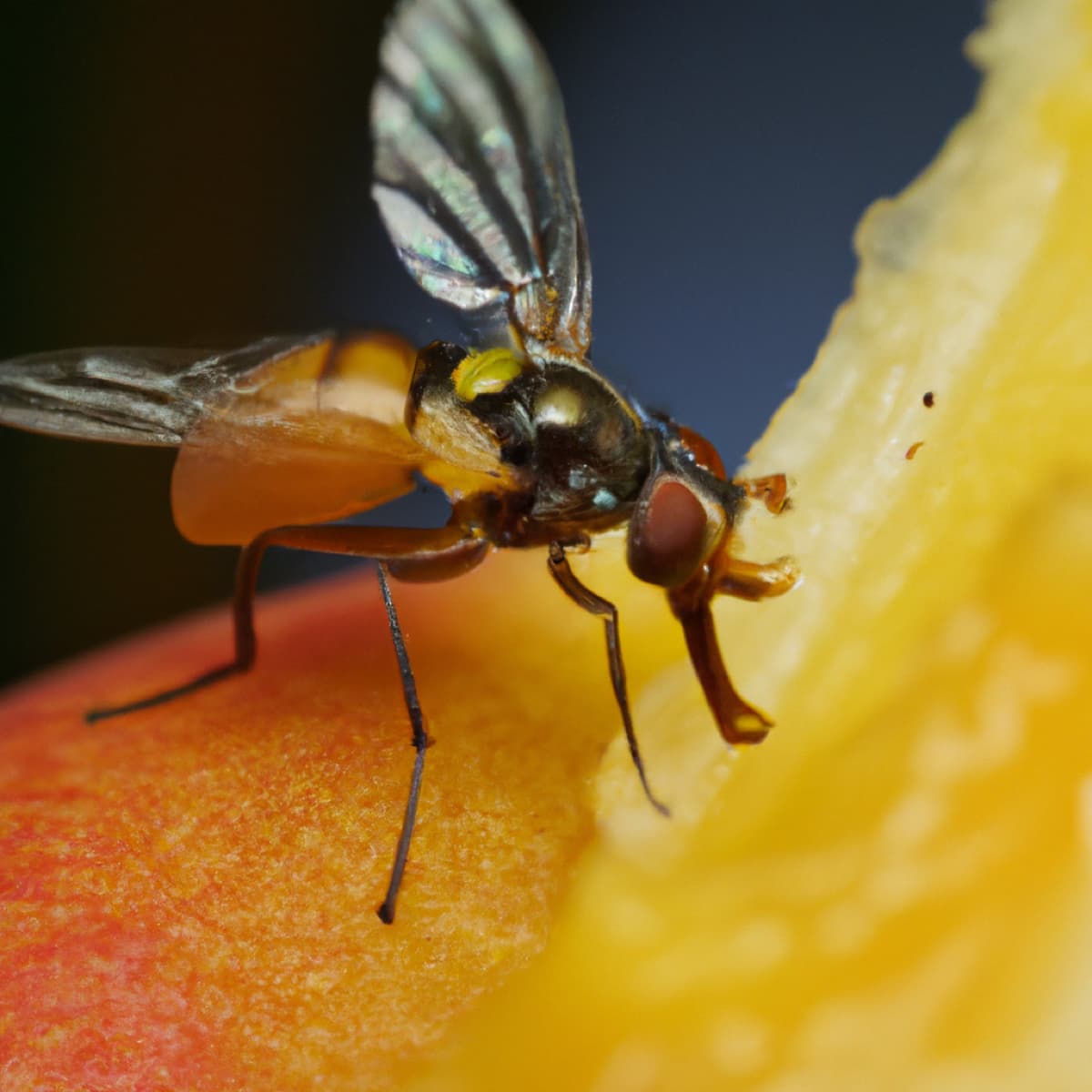
What does a Mango fruit fly look like, and what causes Mango fruit fly infestations?
The mango fruit fly, also known as the African fruit fly or the Mediterranean fruit fly, is a small, yellow-brown fly. Adult flies are 6-7mm long, with a yellow-brown body and dark-colored wings. Their eyes are red, and their thorax and abdomen feature a characteristic pattern of black and yellow markings. Adult flies cause mango fruit fly infestations and lay eggs inside the tree’s fruit.
The larvae eat the fruit when the eggs hatch, causing it to soften and discolor before dropping it. Adult flies can also feed on the fruit’s juice, inflicting additional damage. Mango fruit fly infestations can occur when the flies are present in the area and the conditions are suitable for their development. The flies are attracted to ripe or overripe fruit. They can reproduce multiple times a year in tropical and subtropical regions.
Factors contributing to Mango fruit fly infestations
- The fruit fly larvae will take the pupal stage and complete their life cycle in the soil before emerging as adult flies and infesting the crop. It is why it is critical to implement control techniques that target both adult flies and their larvae.
- Fruit flies are especially prevalent in crops such as watermelon, muskmelon, gourds, lemons, guava, papaya, etc. Fruit fly infestations can also be exacerbated by being in or near a mango orchard. These crops can serve as a food supply and breeding habitat for flies, increasing their population and making control more difficult.
- Fruit fly infestations can be exacerbated by growing several mango kinds with distinct maturity cycles in the same orchard. Because fruit flies attack the crop, especially during fruit growth, late-maturing cultivars are frequently affected the most due to the fruit flies’ successive and longer life cycles.
- Weeds can act as an alternate host for fruit flies. Infested fruits that fall into the plot or near the fruit packaging unit can also be a problem for fruit fly infestations. These can serve as a food source and breeding site for flies, making control more difficult.
Mango FruitFly’s lifecycle
The mango fruit fly has a specific life cycle of four stages: egg, maggot, pupae, and adult. The female fly lays eggs in clusters under the fruit’s skin, usually on ripe or overripe fruit. The eggs hatch into small, white maggots, which burrow into the fruit and feed on the flesh, causing it to become soft and discolored, eventually leading to fruit drop. The maggots then drop to the ground and pupate in the soil. The pupae are yellowish-brown and seed-like.
After about ten days, the adult flies emerge and begin to lay eggs again, starting the cycle anew. Adult flies are 6-7mm long, with a yellow-brown body and dark-colored wings. Their eyes are red, and their thorax and abdomen feature a characteristic pattern of black and yellow markings. Female flies can lay up to 3,000 eggs in their lifetime. Under optimal conditions, the life cycle can be completed in as little as 21 days.
In case you missed it: How to Start Kesar Mango Farming: A Cultivation Guide to Planting to Harvesting
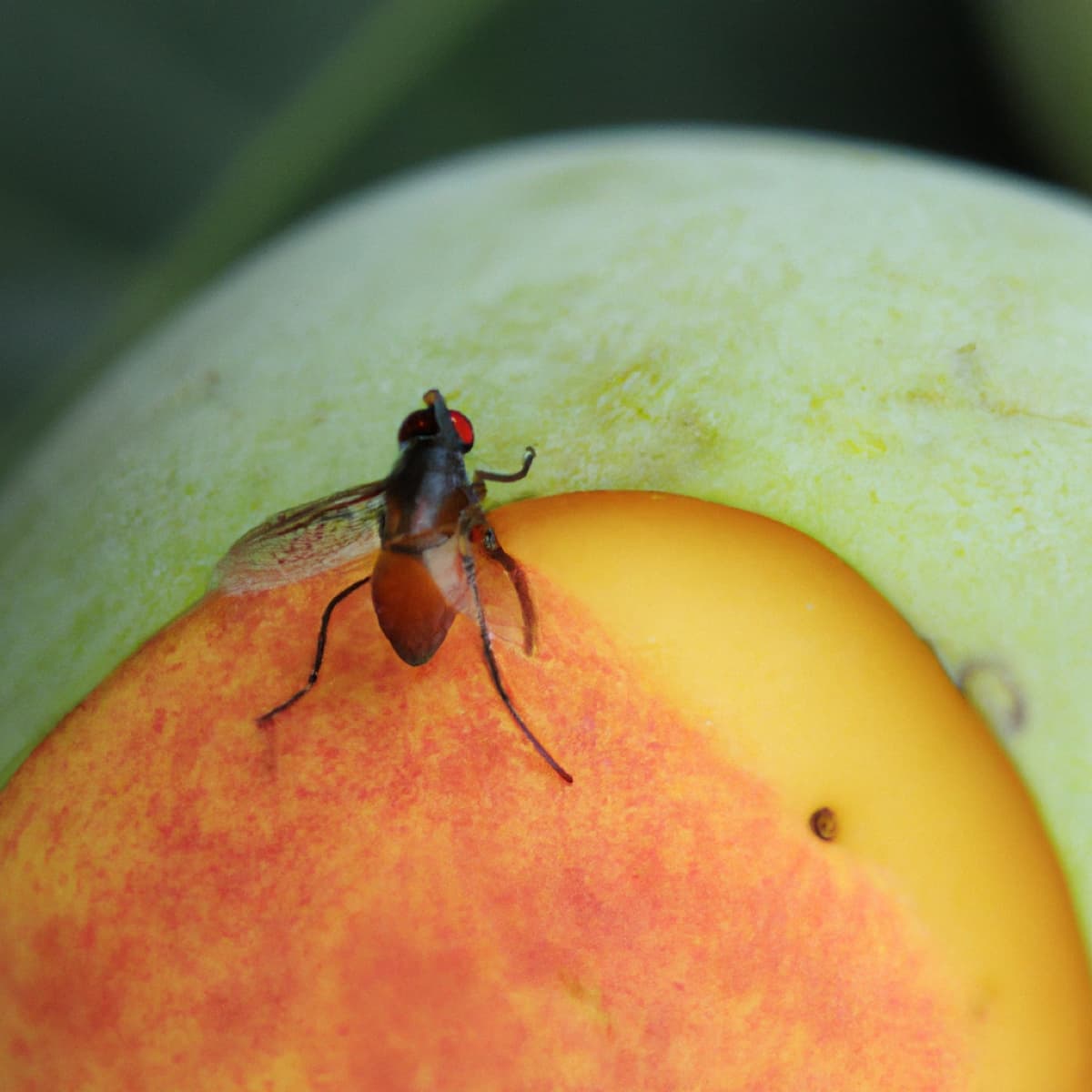
Preventive measures for controlling fruit fly in Mango
- Collecting and eliminating all fallen fruits daily is an essential preventive strategy because fallen fruit attracts fruit flies and provides nesting habitat for their larvae.
- It is also crucial to avoid planting crops frequently affected by fruit flies in the mango orchard or adjoining orchard. It can lower the infestation probability.
- Removing wild or ancient trees in the orchards could serve as a breeding ground for the infestation.
- Removing weeds around the trees and keeping orchard hygiene makes picking fallen fruits easier and helps limit the fruit flies’ population.
- Cultivating the topsoil to a depth of 10 cm can help expose the pupae to sunlight and destroy them, preventing further infection.
- Growing mango varieties with the same growth cycles help to lessen the danger of infestation since fruit flies attack the crop primarily during fruit development; late maturing kinds are frequently afflicted the most due to the fruit flies’ successive and longer life cycles.
- Planting types that develop early, allowing the fruits to ripen and reach the market when fruit fly populations are low, is another efficient approach to avoid infestation.
Home remedies to control or get rid of fruit fly in Mango
| Apple Cider Vinegar Wrap | Use Yellow Sticky Traps |
| Vinegar and Dish Soap | Homemade Non-toxic sprays |
| Wine or Beer Bottle | Product for fruitflies Traps |
| Rotten fruit Pulp Trap | Using Machines to Kill Fruit Fly/ Attract Fruit Fly |
| Candle and Water Trap |
Biological method to control Mango fruit flies
- Parasitoids are insects that lay their eggs inside or on fruit fly larvae. The parasitoid larvae then feed on the fruit fly larvae, effectively controlling the population.
- Predatory insects: Predatory insects such as ladybugs, lacewings, and minute pirate bugs can feed on fruit fly eggs and larvae, reducing the population.
- Tapas Premium Quality Fruit Fly Lure, Barrix Catch Fruit Fly Trap, Pheromone Trap.
- Microbial control: Certain entomopathogenic microorganisms like Bacillus thuringiensis and Beauveria bassiana can be used to control fruit fly populations.
- Sterile Insect Technique: Sterilizing male fruit flies through gamma radiation and releasing them in the orchard leads to mating with wild females but no offspring, eventually reducing the population.
In case you missed it: A Guide to Understanding Mango Tree Propagation: From Seed, Cuttings, Grafting, and Budding
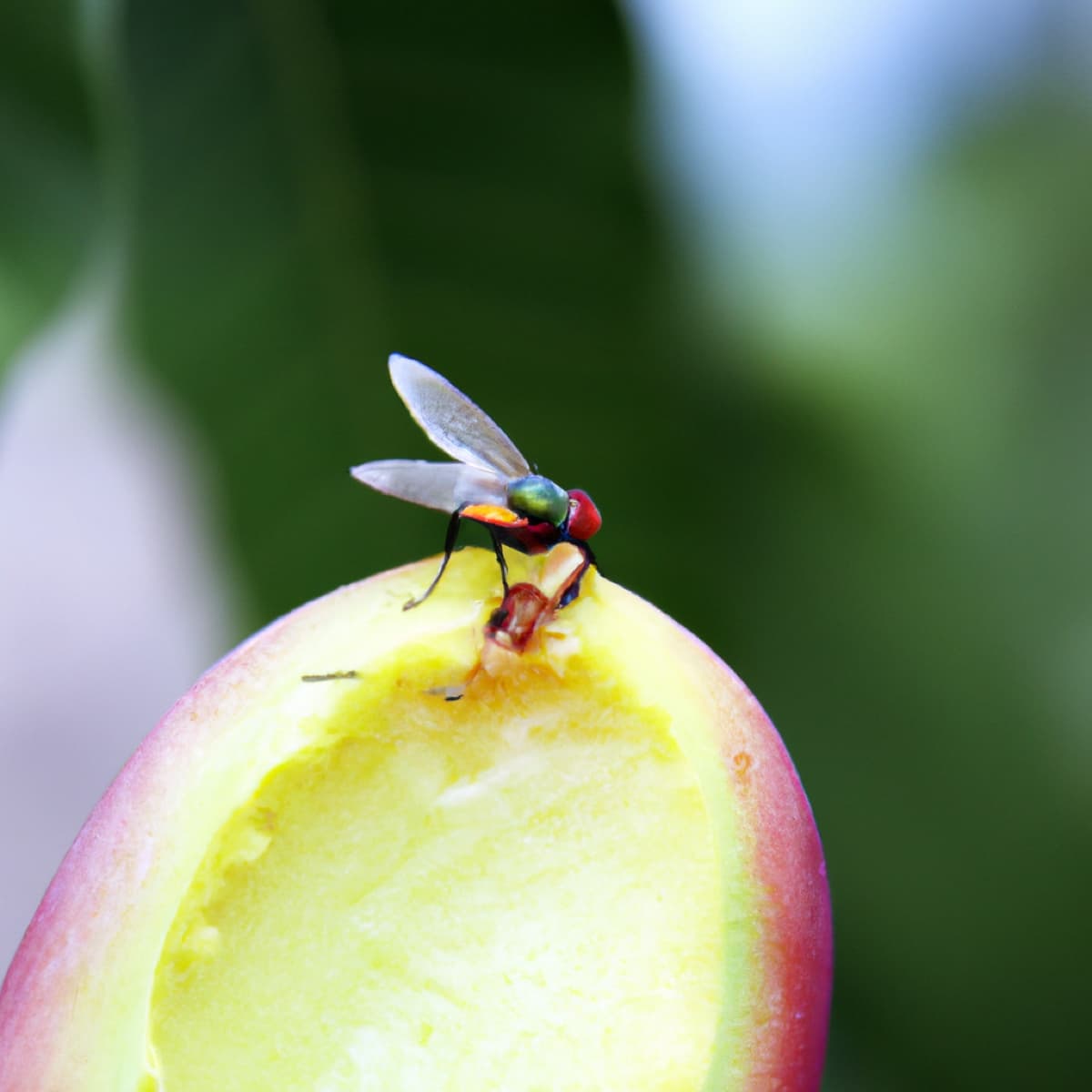
Organic methods to get rid of fruit fly in Mango
- Use of Traps: Pheromone traps can monitor fruit fly populations and detect early infestations.
- Intercropping: Intercropping with trap crops can also reduce fruit fly populations in an orchard.
- Organic insecticides: Neem oil, spinosad, and pyrethrin, derived from plants, can be used as a spray to control fruit flies, but they are less effective than chemical insecticides.
- Organic acids: Organic acids such as acetic acid, citric acid, Vinegar, and malic acid can be used as a spray to repel fruit flies.
- Natural predators: Release beneficial insects like ladybugs, lacewings, and minute pirate bugs can feed on fruit fly eggs and larvae, reducing the population.
Chemical methods to get rid of fruit fly in Mango
- Pheromone traps use a combination of food and pheromones (sex attractants) to lure and trap male fruit flies.
- Insecticides: Insecticides such as malathion, methomyl, and carbaryl can kill fruit flies. These should be applied according to the label instructions. Care should be taken to avoid harming beneficial insects and pollinators.
- Integrated pest management (IPM): This approach involves using a combination of methods, such as pheromone traps, insecticides, and cultural practices, to control fruit flies.
- Spinosad: Spinosad is a naturally-occurring insecticide derived from a soil bacterium. It paralyzes the fruit fly’s nervous system, causing them to die within a few hours. It can be applied as a spray or as a drench to the base of the mango tree.
- Malathion: Malathion is a broad-spectrum insecticide that is highly effective against fruit flies. It disrupts the insect’s nervous system, causing them to die within a few hours. It can be applied as a spray or as a drench to the base of the mango tree.
- Imidacloprid: Imidacloprid is a systemic insecticide taken up by the tree’s roots and transported to the leaves and fruits. It disrupts the fruit fly’s nervous system, causing them to die within a few days. It can be applied as a drench to the base of the mango tree.
- Bt (Bacillus thuringiensis): Bt is a naturally-occurring bacteria toxic to many insects, including fruit flies. It disrupts the insect’s digestive system, causing them to die within a few days. It can be applied as a spray or as a drench to the base of the mango tree.
- Pyrethrin: Pyrethrin is a natural insecticide derived from chrysanthemums. It disrupts the fruit fly’s nervous system, causing them to die within a few hours. It can be applied as a spray or as a drench to the base of the mango tree.
In case you missed it: A Step-By-Step Guide to High Density Fruit Farming: For Guava, Banana, Mango, Pineapple, Lemon, Papaya, Litchi, and Apple
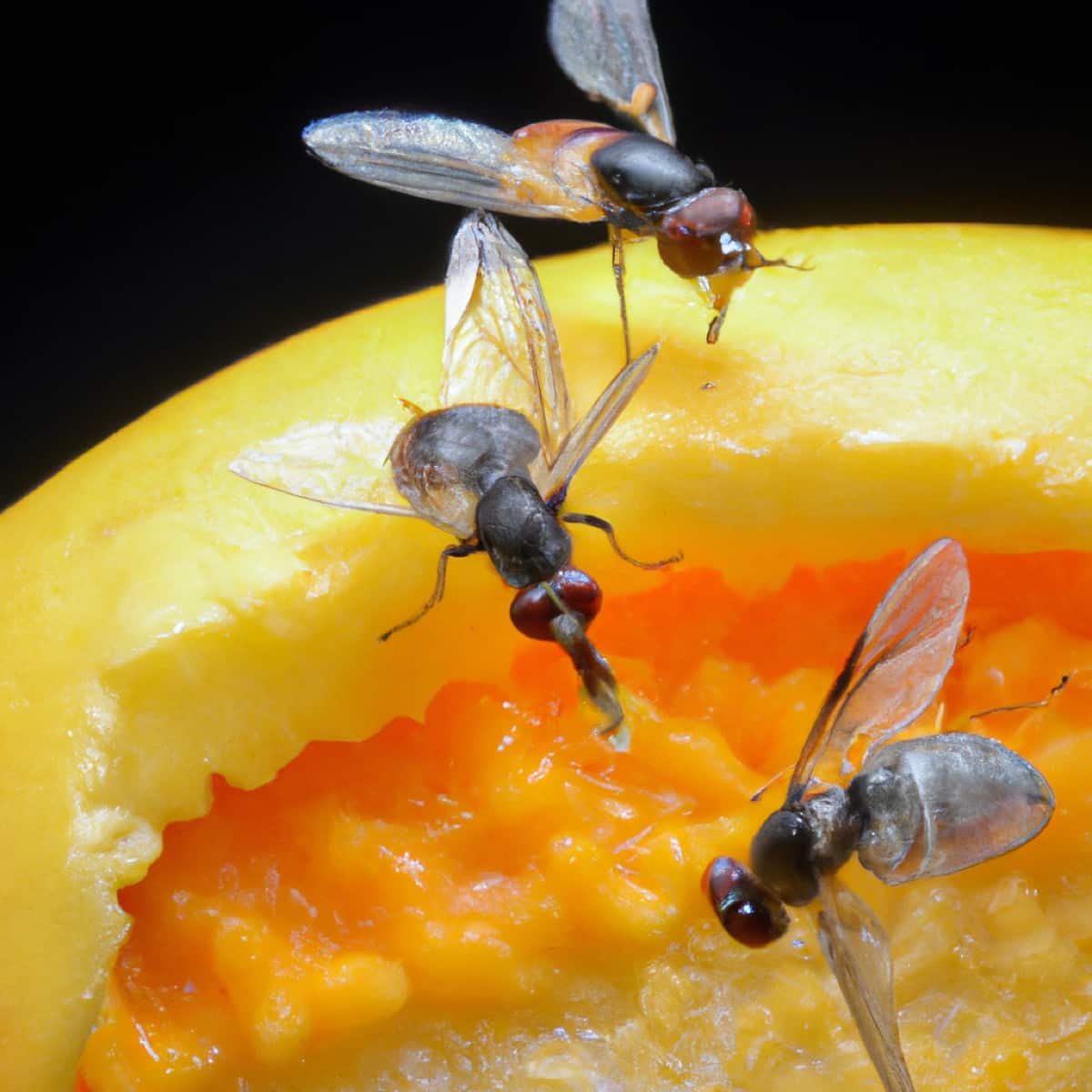
A comprehensive approach is required for effective fruit fly management. It entails maintaining the area surrounding the mango trees clean, removing and disposing of any fallen fruit, and watching for symptoms of infestation on the tree. Crop rotation and planting alternative fruit trees that are less appealing to fruit flies can also help lower the chance of infestation.
Conclusion
Fruit flies can be a significant issue for mango growers. However, with early discovery, correct treatment, and good management, these pests can be controlled and your crop protected. There are both chemical and organic therapy techniques accessible. Pesticides and insecticides are examples of chemical control strategies. On the other hand, organic control measures include using sticky traps, apple cider vinegar, DIY traps, and diatomaceous earth.
In case you missed it: Mango Farming in USA: Growing Regions, How to Start, Planting to Harvesting Guide
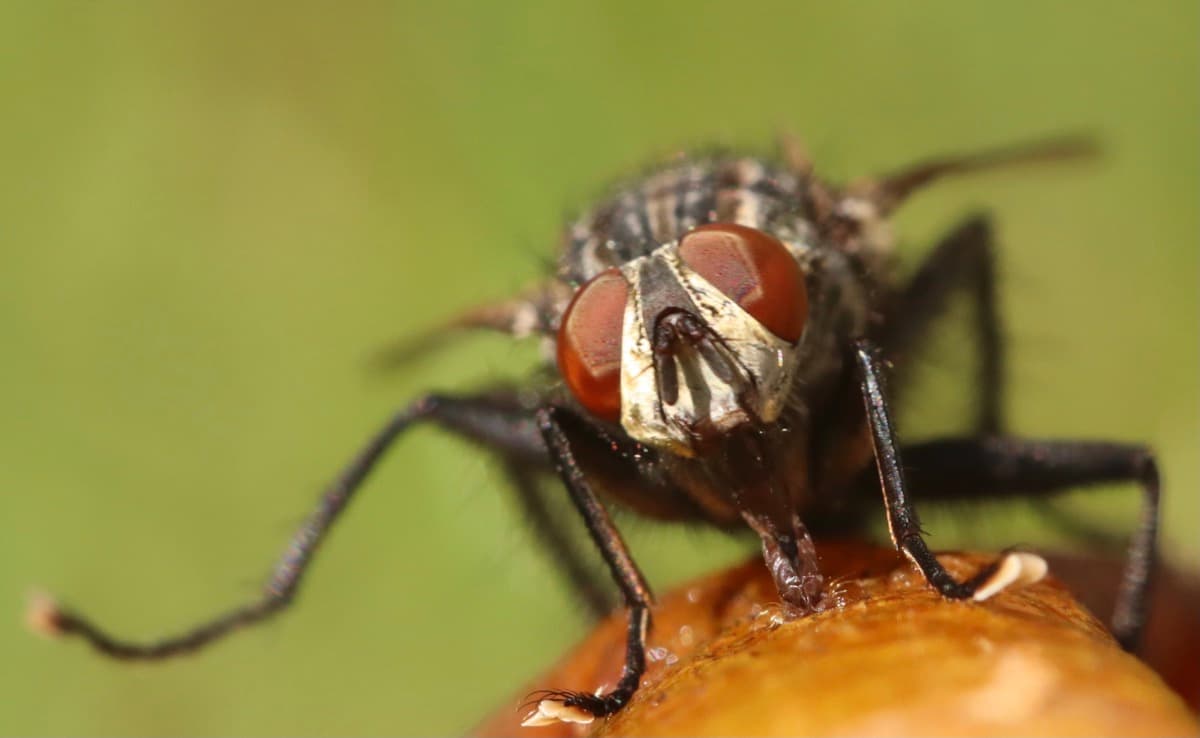
While chemical control measures may be more effective in the short term, they can also harm the environment and should be used with caution. While chemical control measures can be helpful, employing organic approaches whenever possible to reduce environmental damage is always preferable.
- Types of Pesticides Used in Agriculture: A Beginner’s Guide
- Economical Aquaculture: A Guide to Low-Budget Fish Farming
- 15 Common Planting Errors That Can Doom Your Fruit Trees
- How to Make Houseplants Bushy: Effective Tips and Ideas
- Innovative Strategies for Boosting Coconut Pollination and Yield
- Pollination Strategies for Maximum Pumpkin Yield
- The Complete Guide to Chicken Fattening: Strategies for Maximum Growth
- Natural Solutions for Tulip Problems: 100% Effective Remedies for Leaf and Bulb-Related Issues
- Revolutionizing Citrus Preservation: Towards a Healthier, Greener Future
- Natural Solutions for Peony Leaf and Flower Problems: 100% Effective Remedies
- Maximizing Profits with Avocado Contract Farming in India: A Comprehensive Guide
- Natural Solutions for Hydrangea Problems: 100% Effective Remedies for Leaf and Flowers
- The Ultimate Guide to Choosing the Perfect Foliage Friend: Bringing Life Indoors
- From Sunlight to Sustainability: 15 Ways to Use Solar Technology in Agriculture
- The Ultimate Guide to Dong Tao Chicken: Exploring from History to Raising
- The Eco-Friendly Makeover: How to Convert Your Unused Swimming Pool into a Fish Pond
- Mastering the Art of Delaware Chicken Farming: Essentials for Healthy Backyard Flocks
- 20 Best Homemade Fertilizers for Money Plant: DIY Recipes and Application Methods
- How to Craft a Comprehensive Free-Range Chicken Farming Business Plan
- Brighten Your Flock: Raising Easter Egger Chickens for Beauty and Bounty
- How to Optimize Your Poultry Egg Farm Business Plan with These Strategies
- Subsidy for Spirulina Cultivation: How Indian Government Schemes Encouraging Spirulina Farmers
- Ultimate Guide to Raising Dominique Chickens: Breeding, Feeding, Egg-Production, and Care
- Mastering the Art of Raising Jersey Giant Chickens: Care, Feeding, and More
- Ultimate Guide to Raising Legbar Chickens: Breeding, Farming Practices, Diet, Egg-Production
- How to Raise Welsummer Chickens: A Comprehensive Guide for Beginners
- How to Protect Indoor Plants in Winter: A Comprehensive Guide
- Ultimate Guide to Grow Bag Gardening: Tips, Tricks, and Planting Ideas for Urban Gardeners
- Guide to Lotus Cultivation: How to Propagate, Plant, Grow, Care, Cost, and Profit
- Agriculture Drone Subsidy Scheme: Government Kisan Subsidy, License, and How to Apply Online
- Ultimate Guide to Raising Araucana Chickens: Breed Profile, Farming Economics, Diet, and Care
- Bringing Hydroponics to Classroom: Importance, Benefits of Learning for School Students
- Ultimate Guide to Raising Polish Chickens: Breed Profile, Farming Economics, Diet, and Care
- Ultimate Guide to Raising Australorp Chickens: Profile, Farming Economics, Egg Production, Diet, and Care
- Silkie Chicken Farming: Raising Practices, Varieties, Egg Production, Diet, and Care
- Sussex Chicken Farming: Raising Practices, Varieties, Egg Production, Diet and Care